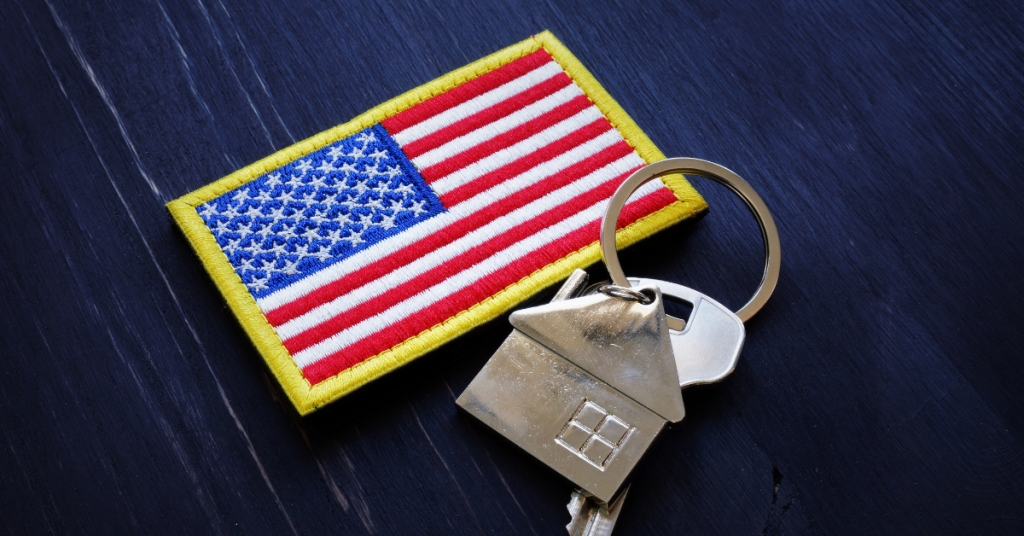In finance, the VA Hybrid loan stands out as a compelling and often misunderstood tool for homeownership. Imagine a loan product with a fixed-rate mortgage’s stability but an ARM’s low interest. Sounds promising? This is precisely what this type of Loan offers.
Crafted with the unique needs of veterans and active-duty military members, the VA Hybrid loan is a financial product that could potentially revolutionize your approach to homeownership.
But as with any financial instrument, and drawing from my vast experience, this loan offer requires a keen understanding. So, let’s embark on this journey and unravel the intricacies of this loan.
Exploring the VA Hybrid Loan
Among various types of VA loan options available today, the Veterans Affairs Hybrid loan distinguishes itself as an innovative blend of traditional mortgages.
It marries together the predictability of a fixed-rate mortgage with the potential financial advantages offered by an ARM.
Specifically catered to serve the needs of veterans and active military members, it begins with a static rate of interest for a specified term and then moves to an ARM.
Furthermore, the connection between the VA hybrid and hybrid ARM loans cannot be ignored. Unlike a strictly fixed-rate mortgage, an ARM loan’s rate of interest is subject to changes over the loan term.
Hence, once the initial fixed-rate term of the loan concludes, it enters an adjustable phase, much like an ARM loan. This level of fluidity can lead to savings if interest rates decrease during this stage.
There are other VA loans available for military veterans and their families. For example, the IRRRL program enables home loan refinancing at reduced rates of interest. Also, a VA jumbo loan can be your best bet if you need a bigger, more flexible option. With more relaxed VA jumbo loan limits and requirements, it can significantly benefit eligible home buyers.
How VA Hybrid Loans Work

Let’s peel away the layers to understand better how the VA hybrid loan works. This powerful loan product is a crossbreed of a fixed-rate mortgage and an adjustable-rate mortgage (ARM), hence the term “hybrid.”
To provide a clearer understanding, let’s break down the VA hybrid loan into its key stages:
Stage 1: Initial Fixed-Rate Period
- In the loan’s initial stage, the borrower enjoys a fixed interest rate. The length of this stable rate period can vary but is typically set for the first three, five, or seven years of the loan.
- During this time, the borrower’s monthly mortgage payment remains consistent, allowing for simplified budgeting and financial predictability.
Stage 2: Transition to Adjustable-Rate Phase
- As the initial fixed-rate term concludes, the loan morphs into the “adjustable-rate” phase, marking the transition into the second characteristic of its “hybrid” nature.
- At this stage, the initial interest rate will adjust periodically, often annually, based on a financial index, such as the U.S Treasury Index, plus the lender’s margin.
Important Feature: Protective Rate Adjustment Caps
- While the rate can adjust upwards or downwards based on broader economic trends, it’s regulated by protective rate adjustment caps.
- These rate caps limit how much the interest rate can increase or decrease annually and over the life of the loan, providing a safety net for borrowers against drastic rate hikes.
Additional Benefits:
-
- Moreover, VA hybrid loans often start with a lower interest rate than more traditional, entirely fixed-rate mortgages, making them an attractive option for those intending to live in their homes for a shorter period.
VA Hybrid Loan Pros and Cons
Generally, VA loans offer numerous benefits. However, every financial product carries specific advantages and disadvantages, and a Veteran Affair Hybrid loan is no exception. Let’s examine the positives and negatives clearly with a table illustration.
| Pros | Cons |
|---|---|
| Lower Initial Rates: Lower Initial payments | Possibility of Increased Rates: Higher payments if market rates rise. |
| Potential for Lower Payments: Potential savings | Uncertainty or Fluctuation: Variability in monthly payments. |
| Rate Increase Protection: Caps on rate increases | Limitations on Rate Protection: May not fully protect against significant changes. |
Adjustable-Rate Period Explained
This period begins after the initial fixed-rate term and allows the interest rate to fluctuate based on market conditions. The rate adjusts yearly after the first five years of fixed interest, offering significant savings if market rates drop. The difference between adjustable rates and hybrid ARMs lies in the loan structure, where an ARM has an initial fixed-rate period before the adjustable-rate period starts.
Preparing for the Adjustable-Rate Phase

Effective preparation can equip you to ride out the financial waves as you transition into the adjustable-rate period. Here is a concise list of strategies to guide you through:
- Understand the Structure of Your Loan: Knowing when the fixed rate ends and the adjustable rate begins is your first step towards preparation.
- Prepare for Possible Rate Increases: Work with your lender to calculate potential payments if the rates increase to the maximum your yearly and life-of-loan caps allow. By doing so, you gear your budget toward potential future scenarios.
- Monitor Interest Rate Trends: Keeping up-to-date with current financial news will enlighten you on economic outlooks and predictions for rate movements.
- Make Additional Payments: Extra payments towards your loan principal can reduce debt. This can help lower your payments when the adjustable-rate period sets in.
- Regular Financial Check-ups: Regularly revisiting your budget, reaffirming your financial objectives, and consulting with your lender or financial advisor can help ensure you’re on track. These check-ups become particularly crucial as you approach the adjustable-rate phase.
By executing these strategies, you’ll be in a strong position to face the adjustable-rate phase of your VA Hybrid Loan, ensuring a smooth financial journey.
Having navigated the hybrid loan landscape, I can confidently say that ARM hybrid loans offer homebuyers extra protection. With a guaranteed rate cap, they may be your ultimate ladder to homeownership.
Frequently Asked Questions About VA Hybrid Loan
What is a hybrid VA?
A Hybrid VA is a mortgage loan for veterans and active-duty military members. It combines adjustable and fixed-rate mortgages, offering a low, stable rate for an initial period before transitioning to a rate that can be adjusted rate based on market conditions.
What are the advantages of hybrid financing?
Hybrid financing offers the benefits of both stability and flexibility. The initial fixed-rate period provides predictability and helps with budgeting. The transition to an adjustable rate allows potential savings if interest rates decrease in the future. It provides a balance between long-term security and the opportunity to take advantage of market changes.
What type of loan is VA?
A VA loan is a mortgage loan backed by the U.S. Department of Veterans Affairs (VA). These loans are available to eligible U.S. veterans, active-duty military personnel, and certain surviving spouses. The VA loan program is known for its benefits, such as no down payment requirement and competitive interest rates.
What is the hybrid interest rate?
The hybrid interest rate combines a fixed rate initially and transitions to an adjustable rate later on. It offers stability followed by potential flexibility based on market conditions or an index.






